
You can send your knitwear OEM tech pack to manufacturers by email or by using safe cloud storage. A full and clear tech pack helps you share your design needs. This also lowers the chance of mistakes. Design software and templates help you make good documents. You save time, and manufacturers know what you want better.
Key Takeaways
A full tech pack helps stop mistakes. Add clear steps, notes, and sketches so manufacturers know your design.
Good talking is important. Always check if they got your tech pack. Ask for feedback to stop mix-ups and errors.
Keep your tech pack files neat. Use the same format and put all papers in order. This helps manufacturers find things fast.
Use pictures and technical drawings. Clear sketches and details help manufacturers make good samples. This also stops expensive mistakes.
Check if your tech pack has everything. Look over all details and sizes before you send it. This helps production go well.
Why a Complete Tech Pack Matters
Reducing Errors
A complete tech pack helps you start your knitwear OEM project right. When you add clear steps, technical notes, and good sketches, your manufacturer can see your ideas. This makes mistakes and confusion less likely.
A tech pack gives written steps that are easy to follow. Manufacturers know what you want, so they do not have to guess.
You can work better with partners from other countries. The tech pack uses pictures and details that everyone can use.
Technical drawings and size details help factories copy your designs the right way. This helps stop expensive mistakes.
The tech pack is one main file. All factory teams can look at the same details, so everyone knows what to do.
When you do these things, you lower the chance of problems and slowdowns. You also help the manufacturer ask questions if something is not clear.
Smoother Production
A good tech pack helps the whole production go well. You give your manufacturer all they need to make your designs real.
The tech pack links your ideas to the factory. It shares your plans with clear steps and details.
Pictures and papers help the team know what to do next. They can follow each step.
A full tech pack means fewer mistakes in samples. You save time and money because the factory does not have to fix errors.
Clear steps in the tech pack help the manufacturer meet your needs. This gives you better results and a nicer product.
Tip: Always check your tech pack for missing info before you send it. Full steps and correct details help everyone work faster and better.
What to Provide If You Don’t Have a Tech Pack
If you do not have a knitwear oem tech pack, you can still share your ideas. You can use other things to help manufacturers understand your design. These steps help you explain what you want and stop confusion.
Basic Sketches and Reference Images
Start with clear sketches. You can draw by hand or use a computer. Add pictures from similar clothes to show the style you like. Good sketches help the factory see your design. If your sketches are not clear, the team may not get your ideas. This can cause mistakes in the final product.
Written Descriptions and Key Measurements
Write down all important details about your design. Describe the shape, fit, and special features. List the measurements for each part of the garment. Include specs for chest, length, and sleeves. Clear specs help the manufacturer make samples that match your ideas. If you skip these details, you might get bad samples.
Sample Garments or Prototypes
You can send a sample garment or a prototype. This gives the factory a real example to follow. They can check the specs and see how the apparel should look and feel. A sample helps when you do not have a full tech pack.
Material and Color Preferences
List the materials and colors you want. Share fabric swatches or color codes if you can. This helps the manufacturer match your choices. If you do not give this info, you may get the wrong fabric or color.
Open Communication with Manufacturers
Keep talking with your manufacturer. Ask them to look at your sketches, specs, and instructions. Request feedback if they have questions. Manufacturers often point out missing or unclear information. Here is how they may respond:
Issue Identified | Impact on Production |
|---|---|
Leads to extra sampling rounds and revisions | |
Incomplete Details | Causes production delays and errors |
Not enough information can lead to bad samples.
Unclear sketches make it hard for the team to know the design.
Note: Not having a tech pack can cause mistakes and slowdowns. Try to make a tech pack for future projects. A full tech pack with all details and steps makes things easier for everyone.
Fashion Tech Pack Essentials

A fashion tech pack gives manufacturers what they need to make your knitwear. You should add clear pictures, correct specs, and easy steps. Good tech packs help you stop mistakes and keep your brand strong. These are the main things you should put in your technical package.
Visuals and Technical Drawings
Start with sketches and technical flat sketches. These show your design from every side. You can draw by hand or use a computer. Technical drawings help the factory see each detail. Add callouts to point out special features. Use design software like Adobe Illustrator or CAD for better results. Downloadable templates help you make tech packs and stay organized.
Tip: Good pictures help the manufacturer understand your ideas. Clear sketches and technical drawings help stop mistakes.
Tech pack examples often have:
Technical flat sketches
Construction details sheet
Callouts for special features
Measurements and Specs
Measurement specs are the most important part of your tech pack. You must list all sizes for each part of the garment. Use a measurement specification sheet to show chest, length, sleeve, and other sizes. Correct specs help the factory make samples that match your design.
Benefit | Explanation |
|---|---|
Eliminates guesswork | Clear specs stop factories from guessing your design ideas. |
Reduces costly errors and delays | Exact details mean fewer changes and faster production. |
Enables accurate cost estimation | Factories can give good quotes using the tech pack info. |
Maintains consistency | Standard specs help all products look the same and keep your brand strong. |
You can set clear quality checks during production.
Using the same steps helps keep product quality and design the same.
Materials and BOM
The Bill of Materials (BOM) lists every part of your garment. You should include fabrics, trims, labels, and packaging. Give each item a special name and number. Add color codes, sizes, and supplier info. List how much and the cost for each part. Pictures like swatches or CAD drawings help the factory pick the right materials.
Component Type | Description |
|---|---|
Fabrics | Main fabric, lining, or other extra fabrics |
Trims | Zippers, buttons, snaps, hooks, thread |
Labels | Care, size, and brand labels |
Packaging | Hangtags, polybags, cartons, barcodes |
Supplier data | Vendor name, color codes, yield, MOQ, and lead times |
Visual references | Swatches or computer-aided design (CAD) drawings |
Make sure the BOM is correct and detailed to stop mistakes.
Add all needed parts to help with costing.
Give pictures to help choose materials.
DESCRIPTION – Name the item, like fabric or trim.
PLACEMENT – Where the item goes on the garment.
SIZE – Size for trims.
COLOR – Use color codes.
FINISH – Special finishes, like metal trims.
AMOUNT – Number of items needed.
SUPPLIER – Source of the item.
CONTENT – Fiber content.
COMMENTS – Extra notes.
Branding and Artwork
You should show your branding and artwork clearly in your tech pack. Give artwork size and where it goes. List color breakdowns and how to apply it, like embroidery or digital print. Add file types like AI, PSD, or PNG. This helps the factory put your branding on the product the right way.
Color breakdown
How to apply (embroidery, digital print, etc.)
File types (AI, PSD, PNG)
Note: Clear branding steps help your product look good and stay the same.
Knit Structure and Processing
You need to tell the manufacturer about knit structure and processing. Say what seam and stitch to use. List how many stitches per inch or centimeter. Tell the distance from the fabric edge to the stitching line. Give thread material, size, weight, and color. These details help the factory sew your product right and keep quality high.
Say the exact seam needed (like ‘Plain seam, press open’).
Tell the stitch needed (like ‘Lockstitch Type 301’).
List how many stitches per inch or centimeter.
Say the distance from the fabric edge to the stitching line.
Tell thread material, size/weight, and color.
Craftmanship & Processing
You must add craftsmanship and processing steps in your tech pack. List all materials in the BOM. Give exact sizes for each part. Write down how to build and finish the product. These steps help the manufacturer know how to make your product well.
Key Components | Description |
|---|---|
Detailed Bills of Materials (BOMs) | Lists all materials needed for the product, so nothing is missed. |
Precise dimensional specifications | Gives exact sizes and limits for each part, which is important for good production. |
Construction and workmanship details | Tells the quality and ways to build the product, helping with craftsmanship. |
Tech sketches
Measurement spec sheets
Fabric and trim details
Colorways
Construction notes
Labeling and packaging steps
Bill of Materials (BOM)
Tip: Use design software like Adobe Illustrator for strong tech packs. Learn about layers and built-in measurement tools for the best results.
How to Make a Tech Pack
Making a strong tech pack helps you share ideas with manufacturers. You need to keep your files neat and easy to read. This helps everyone understand your design. When you know how to make a tech pack, your team and the factory work better together.
Organizing Files
Keep your tech pack files tidy and simple to find. Good file order helps people check your work and stops mistakes. Here are some steps you can use:
Put your files in a clear order. Start with an introduction. Then add specs, materials, and production timelines.
Use tables or charts for measurement specs, materials, and colors. This makes your info easy to see.
Add technical drawings that show the front, back, and side of your clothes. Label each part so the factory knows what to do.
Include pictures or fabric samples to show your ideas.
Check your tech pack for missing info or mistakes before you send it.
You can use cloud storage to keep your files safe. This lets your team and manufacturer see the newest version and work together at the same time. Cloud links help you avoid sending the wrong file or missing feedback.
Tip: Name your files clearly, like “BrandName_StyleNumber_TechPack_v1.pdf”. This helps everyone find the right file fast.
A good file order might look like this:
01_Introduction.pdf
02_Specifications.pdf
03_Materials_BOM.pdf
04_Technical_Drawings.pdf
05_Production_Timeline.pdf
Using a standard format like PDF keeps your tech pack easy to open. Cloud links make sharing simple and help you keep track of changes.
Issue Type | Description |
|---|---|
Read-only files and offline docs make it hard to edit and see new versions. | |
Risk of Costly Mistakes | Using tools like Excel can mean you send the wrong file or miss feedback. |
Miscommunication | No standard tech pack format makes it hard for factories to understand, which can cause mistakes. |
You can stop these problems by using cloud storage and clear file names.
Formatting for Clarity
You want your tech pack to be easy to read and follow. Good formatting helps your manufacturer use your instructions and specs. Here are some ways to make your tech pack clear:
Use simple sketches that show your design from the front, back, and side. Add close-up views for special parts.
Write clear notes for every seam, stitch, closure, and design part.
Keep your sketches simple. Do not use too many lines or colors.
Use tables for measurement specs and materials. This helps the factory see all the details quickly.
Before you send your tech pack, check every page and section. Make sure you include all the info your manufacturer needs. Here is a checklist you can use:
Review your sketches and details to make sure they are right.
Check your materials and trims to see if they match your specs.
Confirm your instructions and needs to stop confusion.
Get feedback and approval from your team or partners.
Test your product with the tech pack to see if it matches what you want.
Note: When you know how to make a tech pack, you help your manufacturer make your product right the first time.
You can also set deadlines and ask for feedback to keep your project on track. Give clear jobs to your team so everyone knows what to do when making the tech pack.
A full knitwear oem tech pack gives your manufacturer all they need. When you organize your files and format your info well, you make things easy for everyone. You save time, make fewer mistakes, and get better results for your clothes.
Sending Your Knitwear OEM Tech Pack

Sharing your knitwear oem tech pack with manufacturers is a key step in starting production. You want to make sure your tech pack reaches the right person and that your specs, instructions, and details are clear. You have several options for sending your tech pack, and each method has its own benefits.
Email and Cloud Options
You can send your tech pack by email or through cloud storage. Email is easy to use and familiar to most people. You do not need to log in to special portals or learn new systems. You attach your tech pack file, write a short message, and send it directly to your manufacturer. Cloud storage, like Google Drive or Dropbox, lets you share a link to your tech pack. This helps you keep your files updated and lets your team see changes in real time.
Email offers fast delivery and strong engagement.
Cloud links help you avoid sending the wrong file.
Both methods let you keep a record of your communication.
Customers prefer email because it is reliable and easy to access. You can send sensitive data securely and get quick feedback.
Manufacturer Portals
Some manufacturers use online portals for tech pack submission. These portals can store your files and track changes. However, many people find portals hard to use. You may need to log in many times or follow complex steps. Studies show that 42% of customers leave portals out of frustration. Portals often lack direct human interaction, which can slow down feedback.
Email is more user-friendly than portals.
Portals may cause delays and lower engagement.
Many customers choose email for its speed and simplicity.
Communication Tips
After you send your tech pack, you should confirm that your manufacturer received it. You can use email confirmation templates to ask for acknowledgment. This helps you keep a professional record and build a good relationship.
Send a formal email that lists the document name and date.
Ask your manufacturer to reply and confirm receipt.
Use email features that notify you when your tech pack is opened.
Requesting acknowledgment creates a friendly and professional connection. It helps you make sure your manufacturer understands your instructions and specs.
You should always follow up if you do not get a reply. Clear communication helps you avoid mistakes and keeps your project on track.
Common Tech Pack Mistakes
Mistakes in your tech pack can cause big problems. You might spend more money or wait longer for your knitwear. Sometimes, you may even get products that are not good quality. If you know the most common mistakes, you can avoid them. This helps keep your project on track.
Incomplete Files
Sometimes, people forget to add important specs or details. This can make things confusing for the manufacturer. It may also mean you need to make more samples. Experts say missing info and bad planning are big reasons for delays. If your files are messy, the manufacturer may not find what they need.
Common problems are:
No measurement charts or unclear sketches
Files saved in the wrong way or with blurry pictures
Documents not in a clear order
To stop these problems:
Make your tech pack in Adobe Illustrator or a similar tool
Use the dieline you are given and do not change it
Set your color space to CMYK and use Pantone swatches if needed
Save your files as AI or PDF with 300 dpi
Add bleed, trim, and safety lines
Change text to outlines and put all images inside the file
Tip: Always check your tech pack before you send it. Make sure every file is finished and easy to read.
Poor Communication
If you do not talk well with your manufacturer, your project may slow down. You might also spend more money. Problems happen when your instructions are not clear or you do not answer fast. This can mean you need more samples, which costs more and takes time.
You can stop these problems by:
Making a detailed tech pack so there is no guessing
Setting up good ways to talk from the start
Using tools like Techpacker to manage chats and show changes
Talking often with your manufacturer during the whole project
A full tech pack with clear specs and steps helps you save money. Brands that send full tech packs often need only one or two samples. If your tech pack is not complete, you may need up to five samples. This can cost you more money and take more weeks.
Note: Good planning and clear talking help you get what you want without delays.
You can send your knitwear OEM tech pack easily if you do these things: First, write down every fabric, printing, labor, and production detail. Next, check all measurements and do not use unclear instructions. Make sure each part is neat and has a label so it is simple to look at. Always be clear so no one gets confused. Talk to your manufacturer early to get their thoughts. If you use good templates and design tools, your tech pack will be better. Clear details and neat pages help you stop mistakes and keep your work moving. Try these tools when you make your next tech pack for better results.
FAQ
What file format should you use for your tech pack?
PDF works best for tech packs. You can also use AI or Excel files if your manufacturer requests them. PDF files keep your layout and details safe. Always check with your manufacturer before sending.
How do you protect your design when sharing a tech pack?
You can add a watermark or copyright notice to your files. Use secure cloud links with limited access. Always send your tech pack to trusted contacts only.
Can you update your tech pack after sending it?
Yes, you can update your tech pack. Let your manufacturer know about any changes. Share the new version and highlight what you changed. This helps avoid confusion.
What should you do if your manufacturer has questions?
Always reply quickly. Answer each question clearly. If you do not know the answer, ask your team or check your notes. Good communication helps your project succeed.










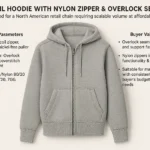
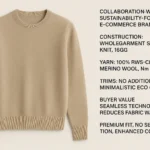



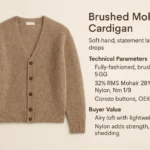
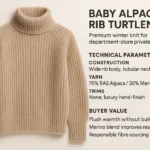
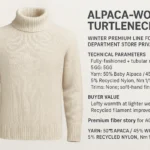
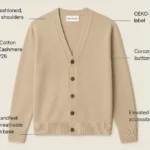
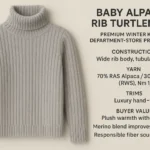
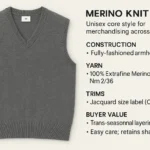
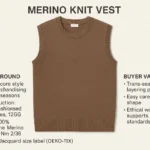
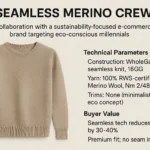

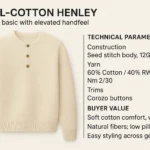
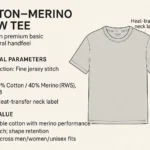
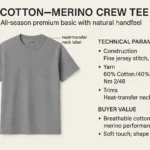

1 thought on “How to Share Your Knitwear OEM Tech Pack with Manufacturers”
Pingback: How OEM Knitwear Manufacturers Turn Ideas into Finished Products